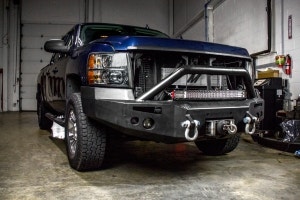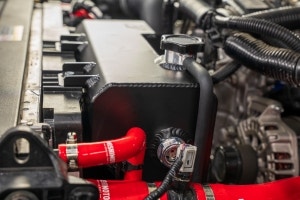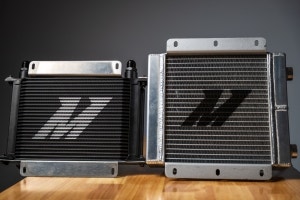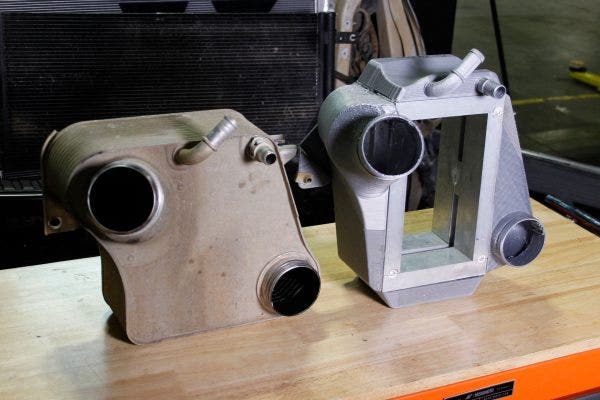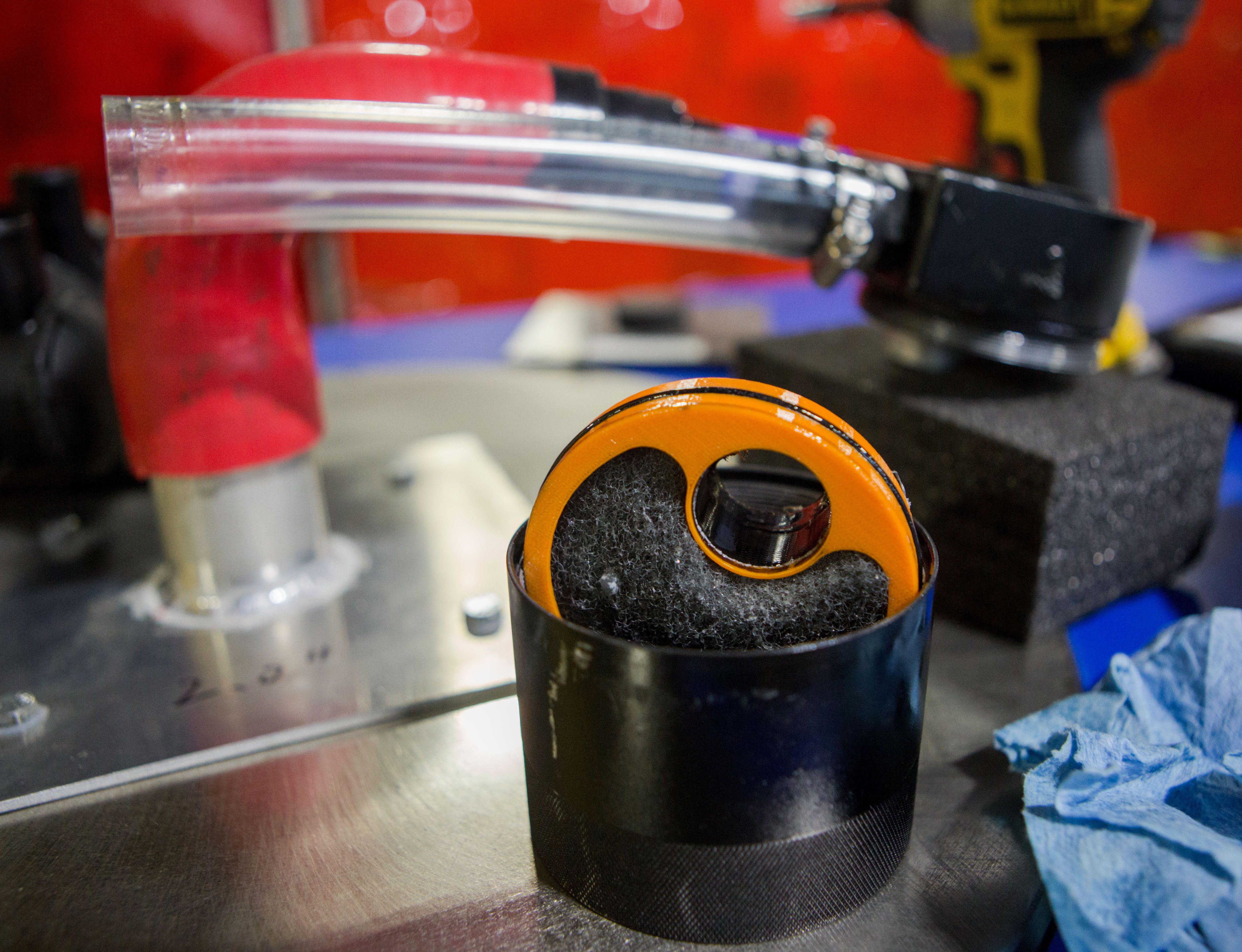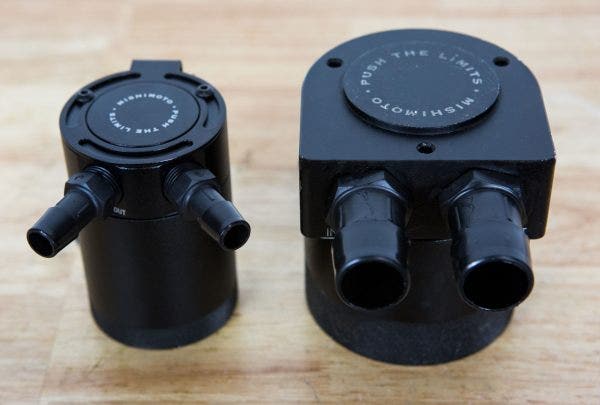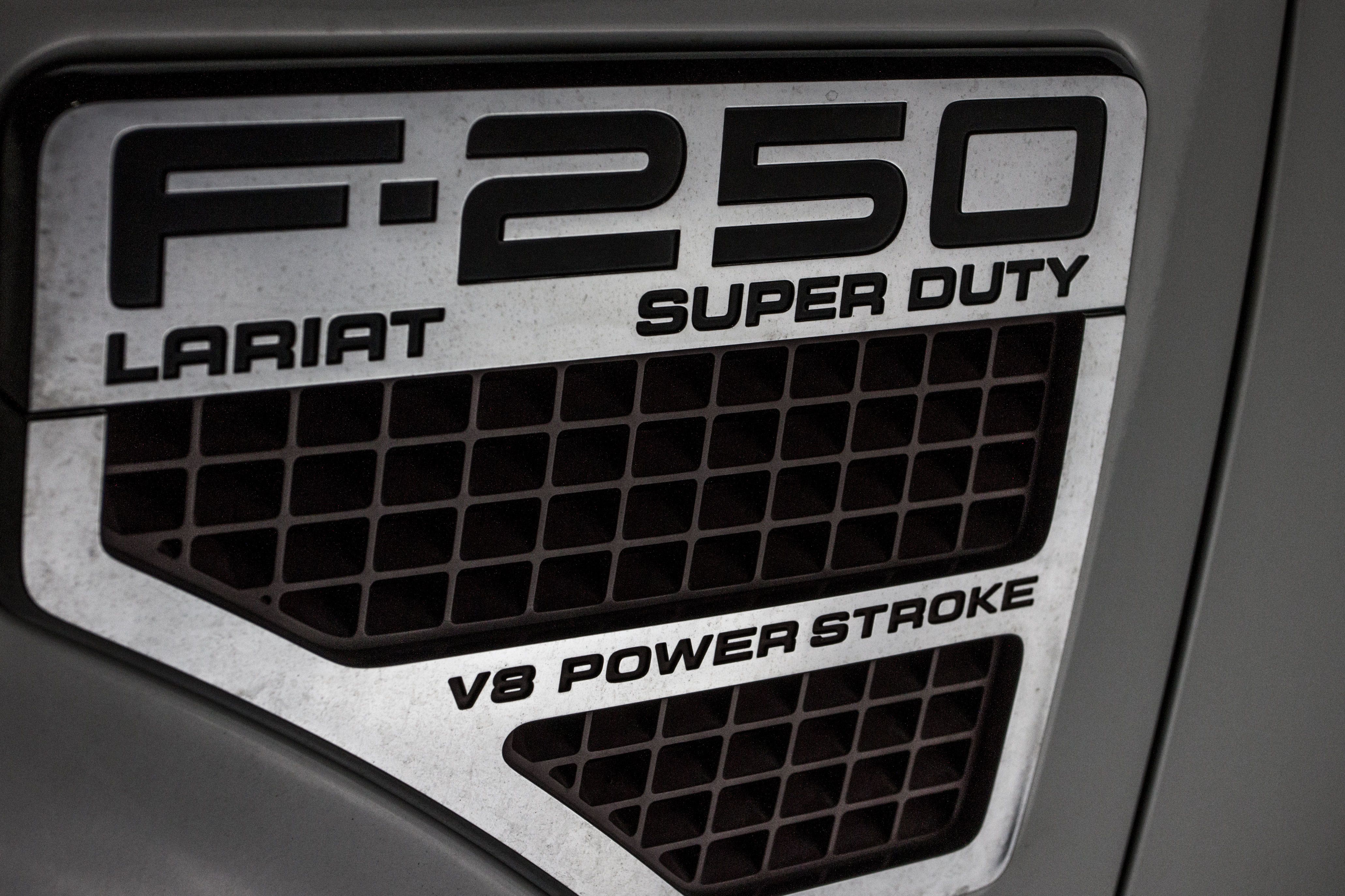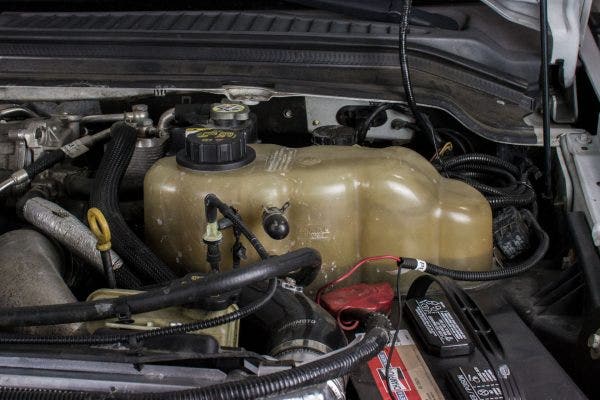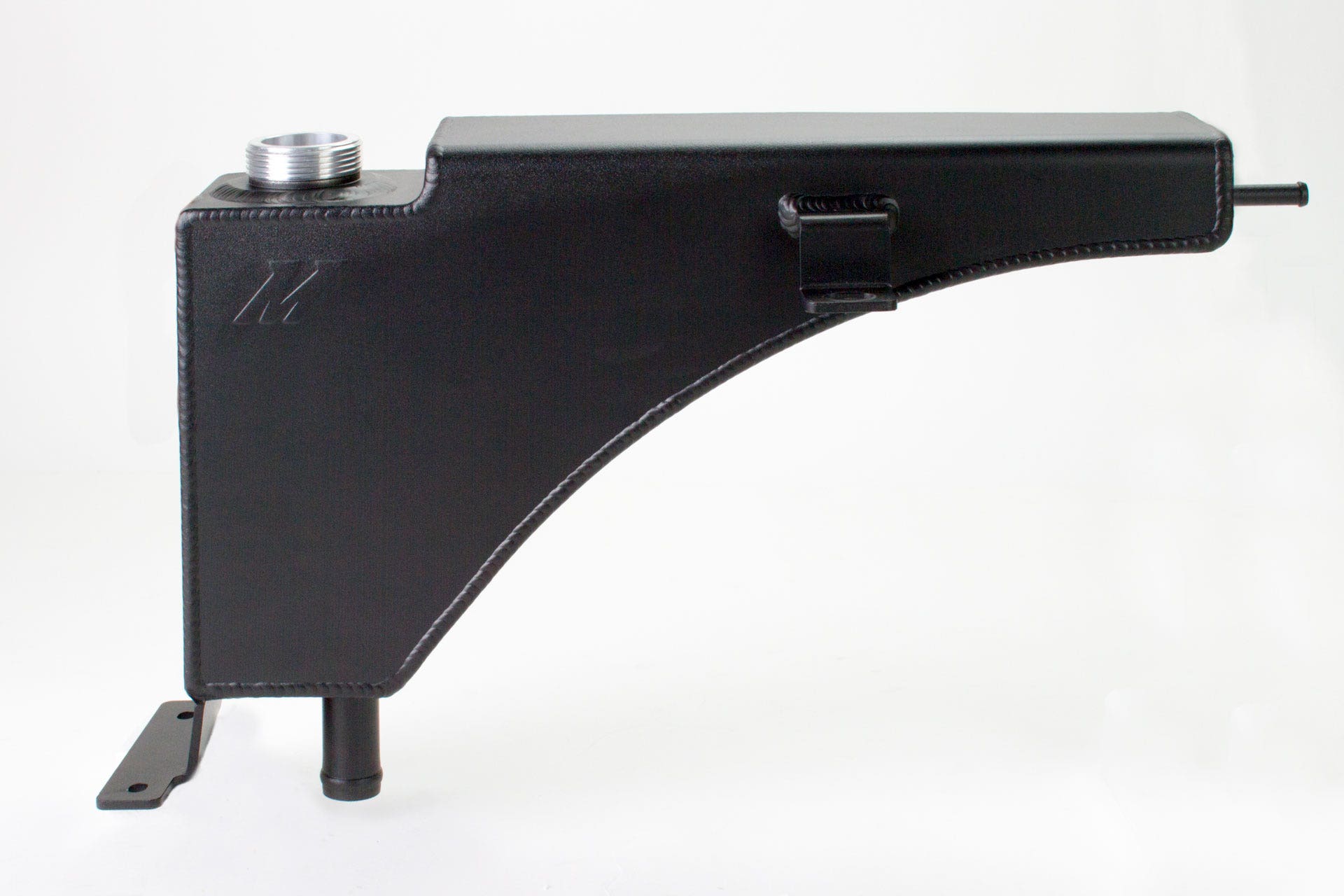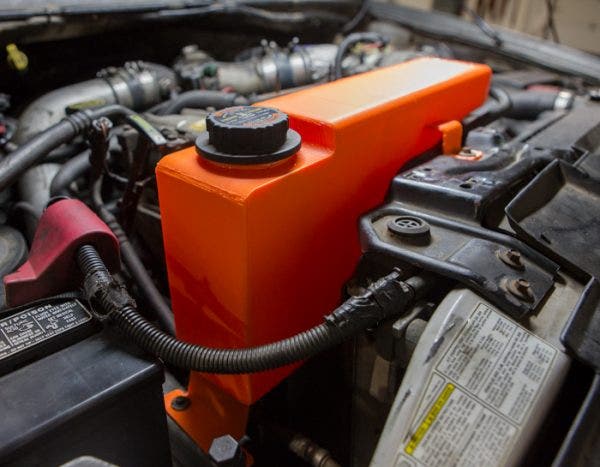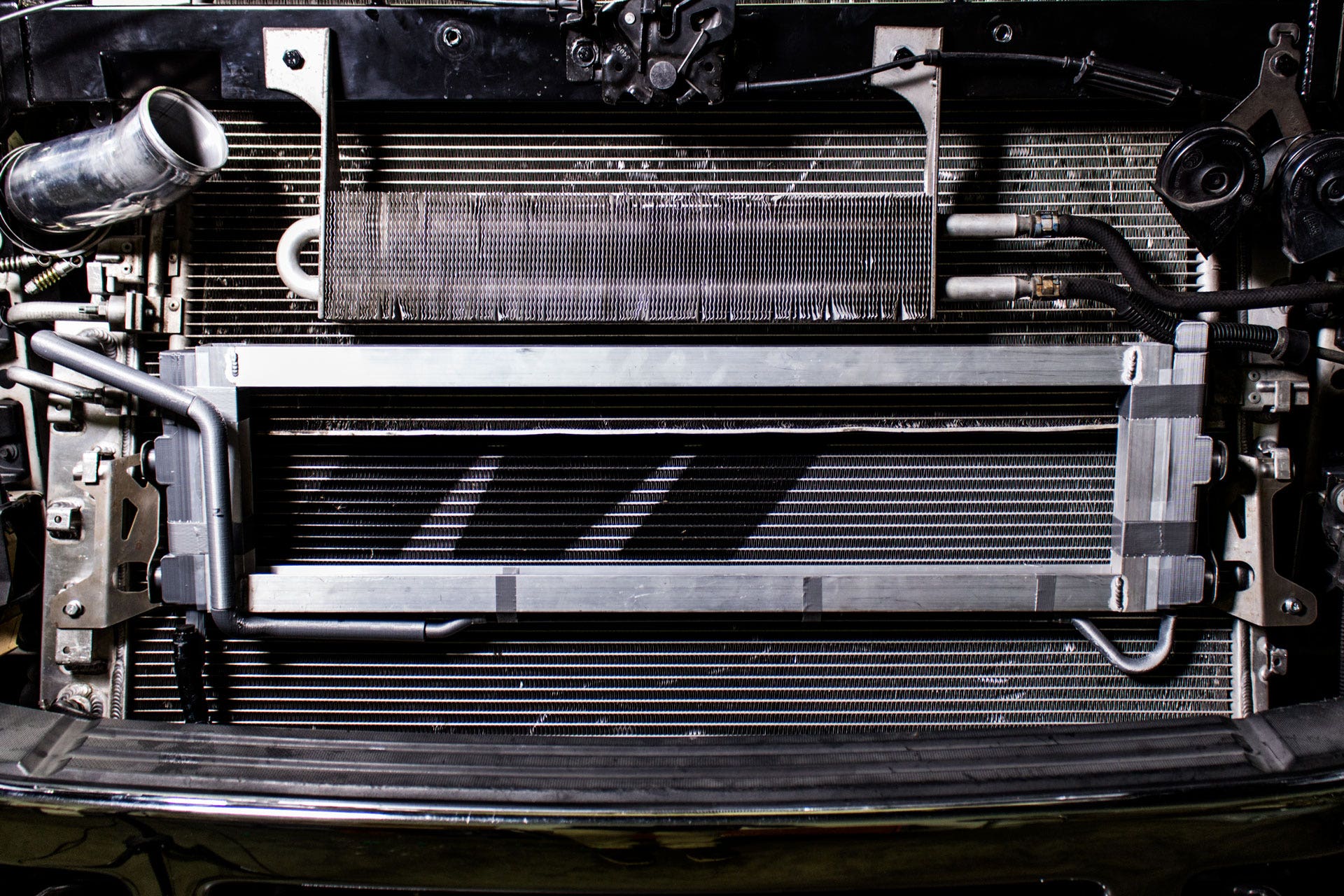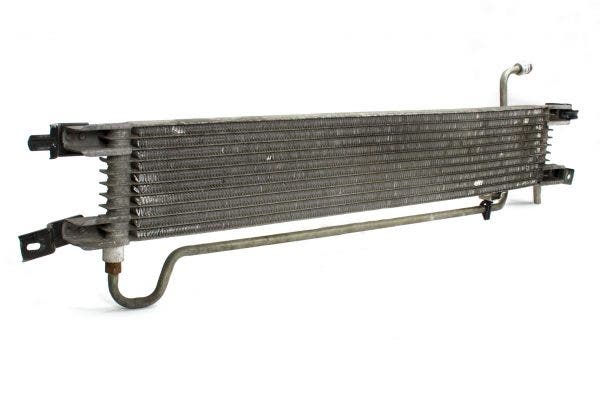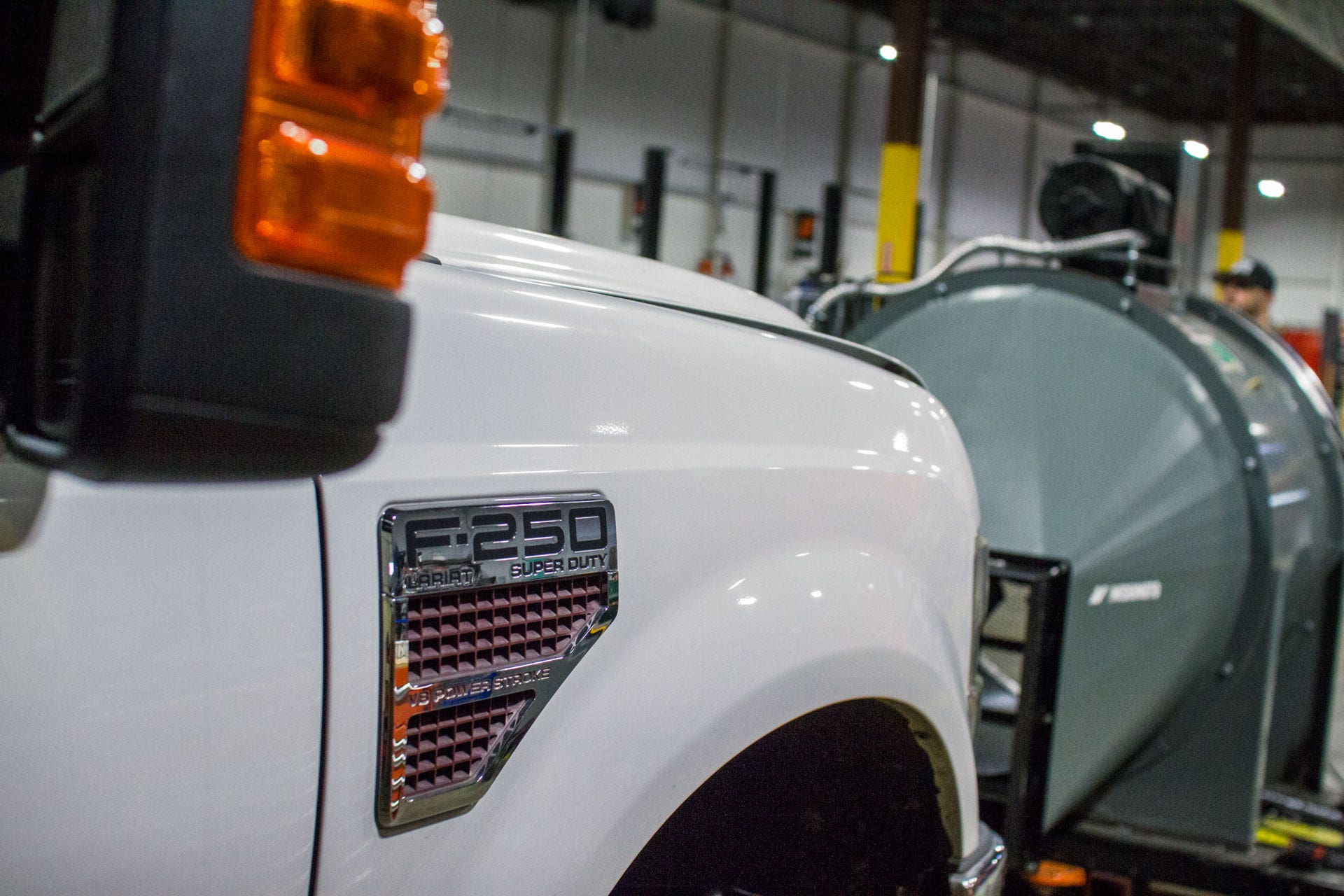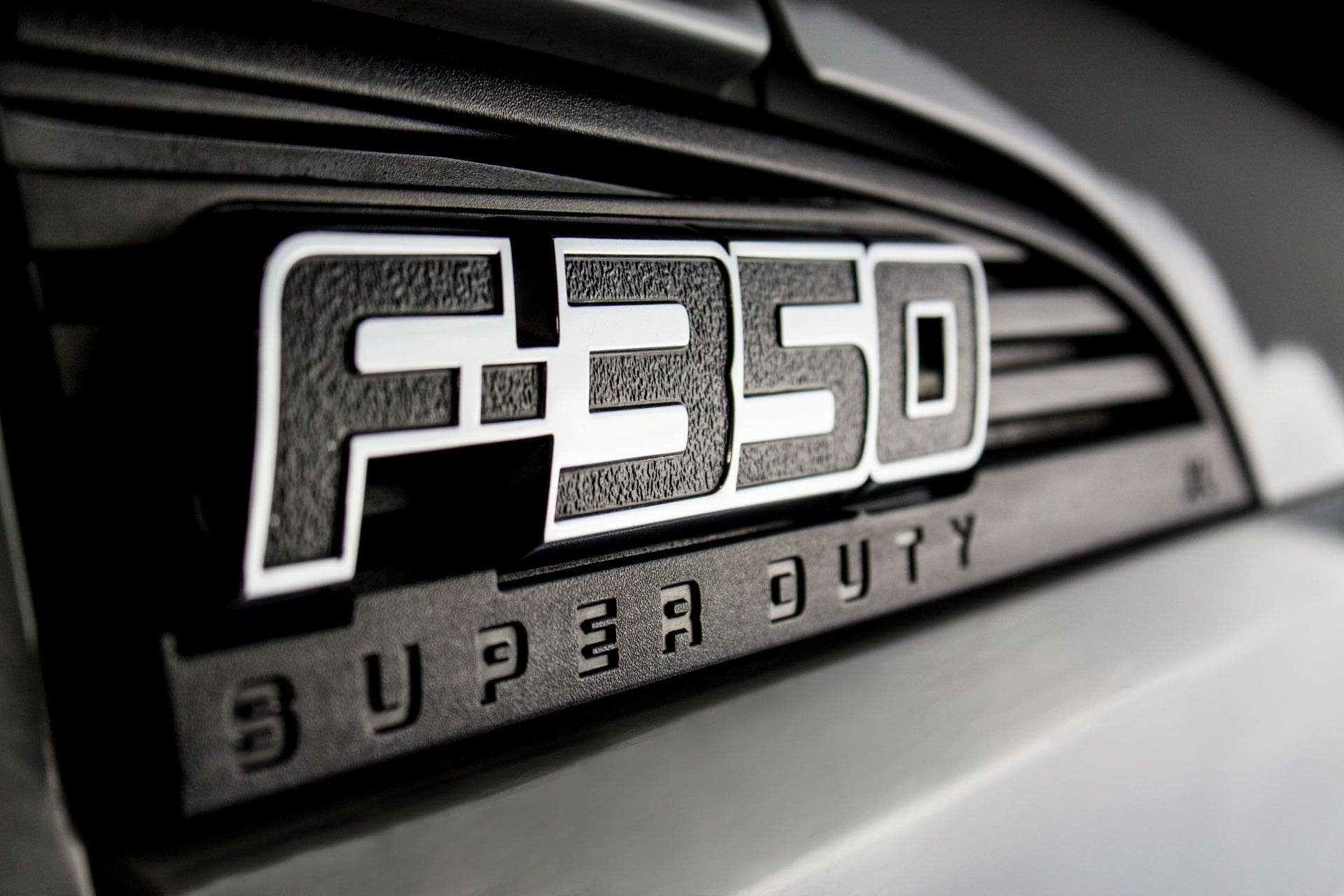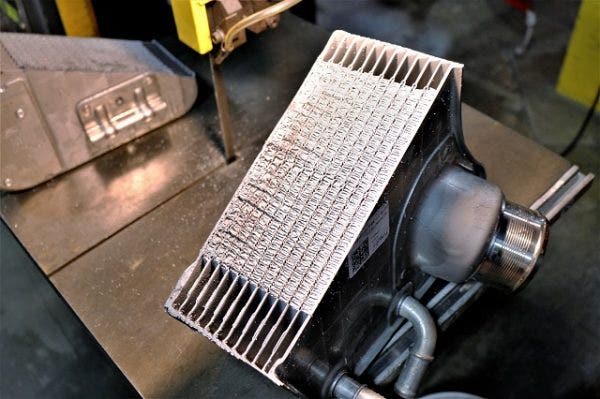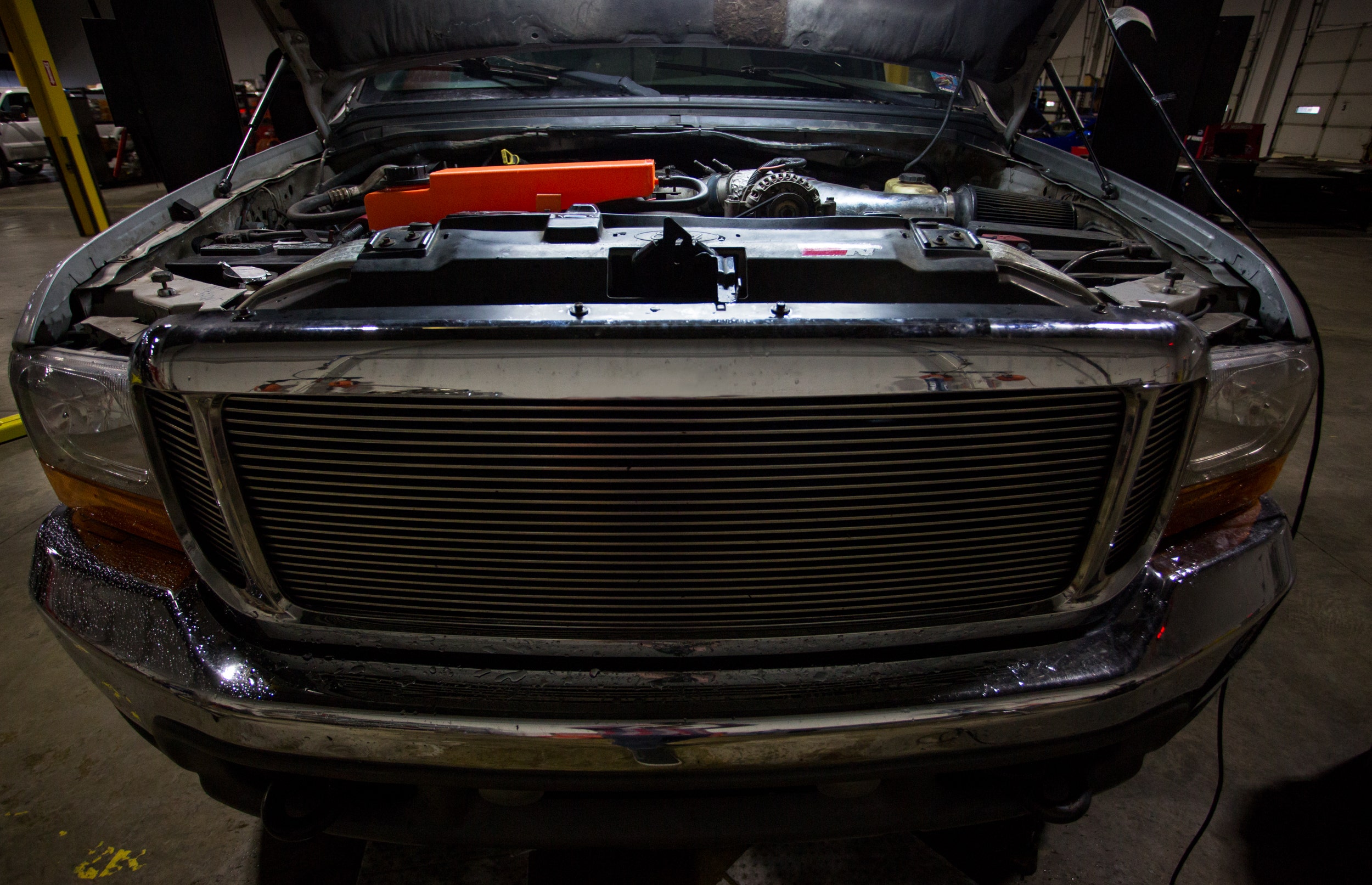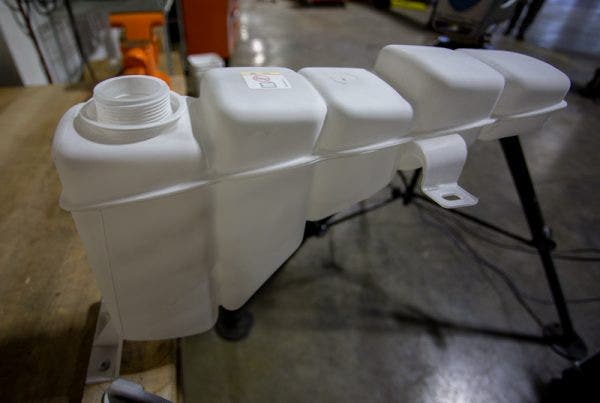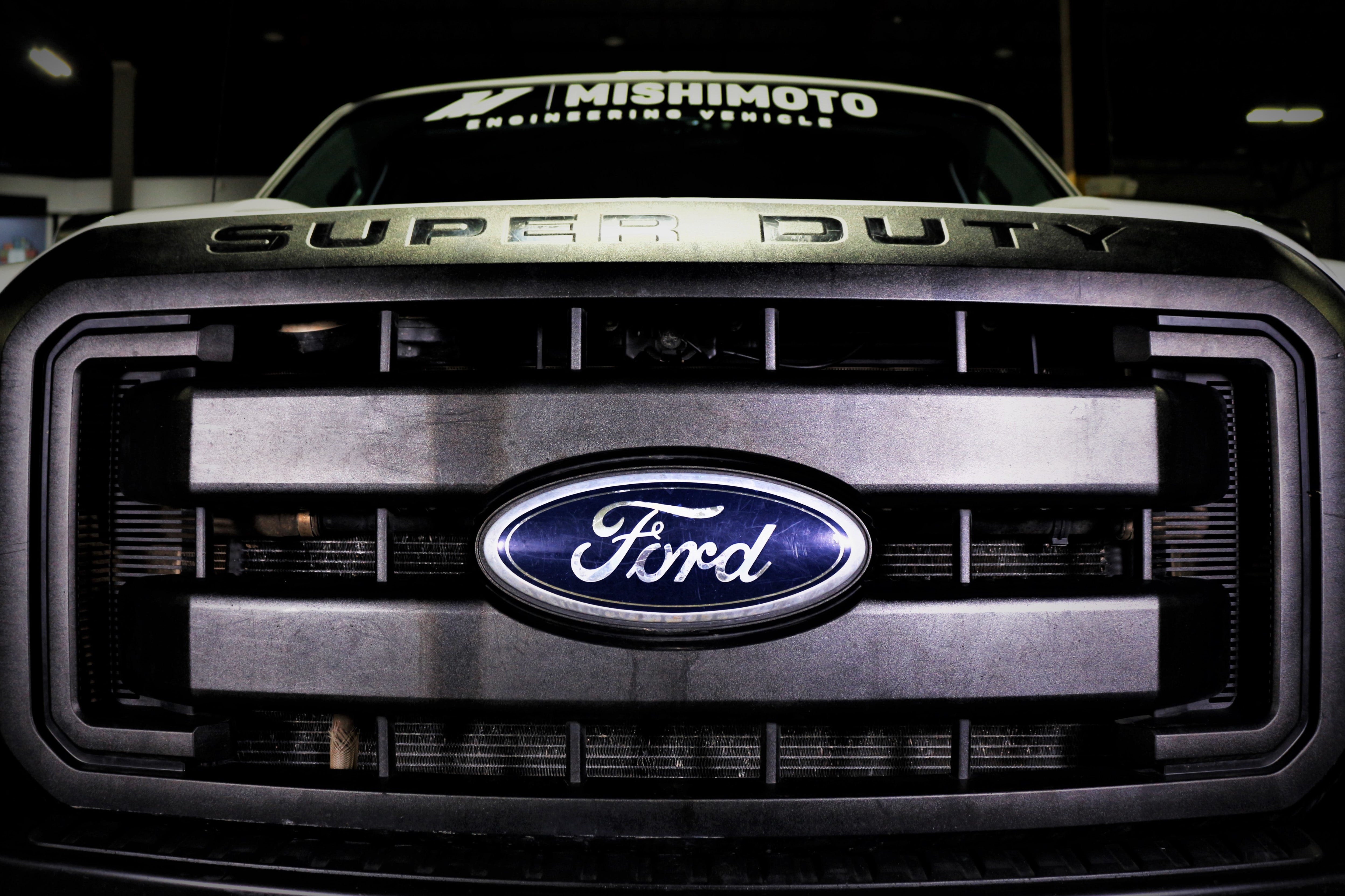It wasn't too long ago that we saw our 2011-2017 Ford Powerstroke 6.7L air-to-water intercooler on the flow bench. We talked about flow rates, and pressure drop, and learned that our intercooler flows air about 22% better than the stock cooler. Soon, we'll see how that increased flow translates into power on the Dynapacks. But first, I wanted to circle back to our original goal for this project: make the intercooler stronger.
We started this project over a year ago after finding reports of owners and shops chasing disappearing coolant. Further inspection would show that the stock intercoolers were leaking internally, and the coolant was making its way into the engine. While we didn't see a massive amount of these cases, there were enough reports for us to investigate further. After looking at our own 6.7L shop truck, we determined that we could make a stronger intercooler with a bar-and-plate core and cast end-tanks. We were also confident that the truck would make more power with
